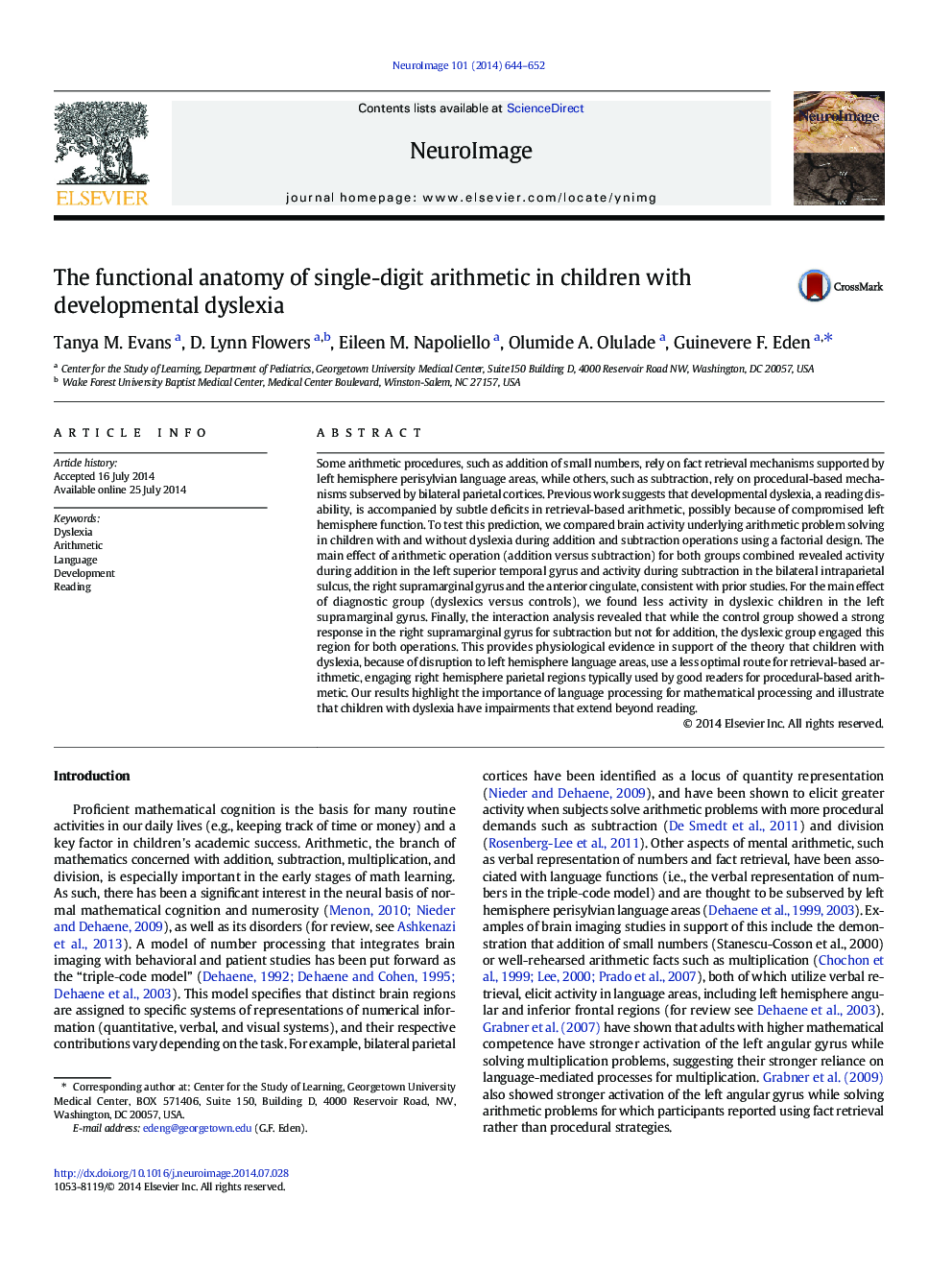| Article ID | Journal | Published Year | Pages | File Type |
|---|---|---|---|---|
| 6026394 | NeuroImage | 2014 | 9 Pages |
â¢First neuroimaging study of arithmetic in individuals with dyslexia.â¢Less activity in dyslexics during arithmetic processing in left supramarginal gyrus.â¢Lack of modulation by operation in right supramarginal gyrus in children with dyslexia.â¢Atypical brain function in dyslexia for retrieval based arithmetic in addition.
Some arithmetic procedures, such as addition of small numbers, rely on fact retrieval mechanisms supported by left hemisphere perisylvian language areas, while others, such as subtraction, rely on procedural-based mechanisms subserved by bilateral parietal cortices. Previous work suggests that developmental dyslexia, a reading disability, is accompanied by subtle deficits in retrieval-based arithmetic, possibly because of compromised left hemisphere function. To test this prediction, we compared brain activity underlying arithmetic problem solving in children with and without dyslexia during addition and subtraction operations using a factorial design. The main effect of arithmetic operation (addition versus subtraction) for both groups combined revealed activity during addition in the left superior temporal gyrus and activity during subtraction in the bilateral intraparietal sulcus, the right supramarginal gyrus and the anterior cingulate, consistent with prior studies. For the main effect of diagnostic group (dyslexics versus controls), we found less activity in dyslexic children in the left supramarginal gyrus. Finally, the interaction analysis revealed that while the control group showed a strong response in the right supramarginal gyrus for subtraction but not for addition, the dyslexic group engaged this region for both operations. This provides physiological evidence in support of the theory that children with dyslexia, because of disruption to left hemisphere language areas, use a less optimal route for retrieval-based arithmetic, engaging right hemisphere parietal regions typically used by good readers for procedural-based arithmetic. Our results highlight the importance of language processing for mathematical processing and illustrate that children with dyslexia have impairments that extend beyond reading.
